Why Do My Clothes Have So Much Lint?
If you’ve ever found yourself picking lint off your clothes after doing a load of laundry, you’re not alone. Many people have the same problem – and it can be frustrating!
There are a few possible reasons why your clothes might have more lint than usual. It could be that you’re using a new laundry detergent or fabric softener that doesn’t agree with your clothes. Or, it could be that you must clean its traps more often.
We’ll explore some of the possible reasons why your clothes might be covered in lint, as well as some tips for getting rid of them. Keep reading to learn more!
All the Possible Causes of Lint on Clothing

There are several possible causes of lint on clothing. It can be caused by static electricity, fabric softeners or conditioners, dryer sheets, and even the type of fabric itself.
1. Static Electricity
Static electricity is one of the most common causes of lint on clothing. When clothing rubs against itself or another surface, it can create static electricity, which often creates lint on your dress.
2. Fabric Softeners
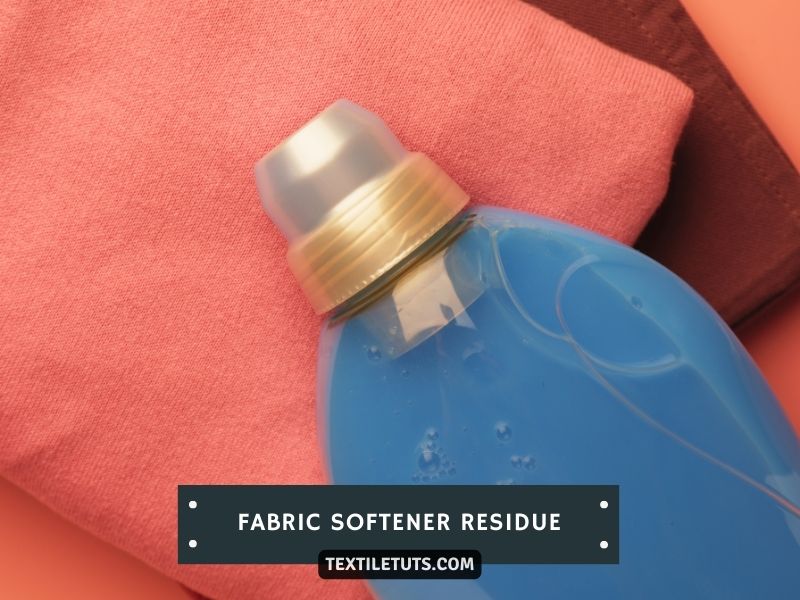
Chemicals in fabric softeners can build up on clothes over time. This can make the clothes more likely to attract them.
3. Dryer Sheets
Dryer sheets can also cause lint on clothing. The chemicals in dryer sheets can make it more likely for them to stick to your clothes.
4. Type of Fabric
Certain types of fabric are more likely to attract lint than others. For example, synthetic fabrics like polyester are more likely to attract than natural fabrics like cotton.
5. Improper Washing
Improper washing can also lead to lint on clothing. If clothes are not washed properly, they can retain it and other debris that will eventually end up on the dress.
6. Improper Drying
It can also be a result of improper drying. If clothes are not dried properly, lint and other particles might accumulate on them over time.
7. Clogged Lint Trap
It can become clogged over time and create it to accumulate on clothes if it isn’t cleaned on a regular basis.
8. Improper Storage
Improper storage can also lead to lint on clothing. If clothes are not stored properly, they can become wrinkled and attract it.
9. Dry Cleaning
Dry cleaning can also cause lint on clothing. The chemicals used in dry cleaning can build up on clothing and make it more likely to attract them.
How to Prevent Lint on Clothing?
Lint on clothing is unsightly and can be difficult to remove. These are tiny pieces of fabric that are shed from clothing, upholstery, and towels. When these fabric fibers collect on clothing, they create a fuzzy mess. These can also transfer to other surfaces, like furniture and walls. To keep your clothes lint-free, you’ll need to take regular preventive measures.
Here are some tips for preventing lint on clothing:
Regular Laundering
One of the best ways to prevent lint buildup on clothing is to launder items regularly. Laundering removes any existing lint and helps to prevent new from forming.
Be sure to use a lint-free detergent and the correct water temperature for the fabric type. Also, avoid overloading the washing machine, so clothes have enough room to move around and air out properly.
Brushing or Shaking Out Garments
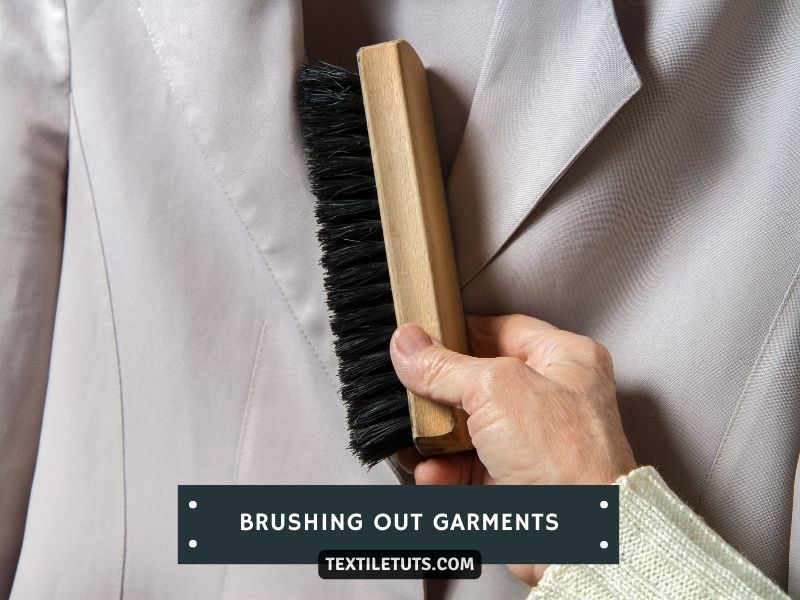
Before wearing clothing, you should give items a good brush or shake out. This will remove any loose fibers that could transfer onto your clothing during wear. For particularly fuzzy fabrics, like wool sweaters, you may need to use a lint brush or comb to remove all of the loose fibers.
Choosing the Right Fabric
Some fabric types are more prone to lint than others. For example, wool and cotton are two fabrics that tend to attract them. If you’re particularly susceptible to this buildup, you may want to avoid these fabrics altogether. Instead, opt for synthetic fibers like polyester or nylon. These materials are less likely to hold onto them and other debris.
Wearing Lint-Resistant Clothing Items
There are a few clothing items that are naturally lint-resistant. These include items like tights, leggings, and pantyhose. If you’re worried about them, you can also opt for clothes made from synthetic materials. These fabrics will help to reduce the amount of lint that your clothing attracts.
By taking these preventive measures, you can keep your clothes lint-free. With a little effort, you can keep your clothes looking clean and neat all season long.
How to Remove Lint from Clothing?
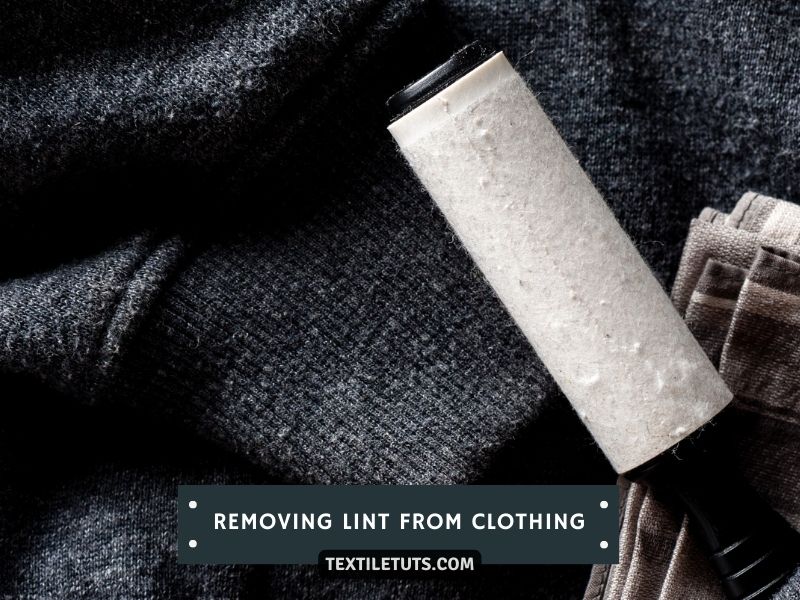
Assuming you want tips on how to remove lint from clothing:
Use Tape
A quick and easy way to remove them from clothes is to use tape. Simply take a piece of Scotch tape or other strong adhesive tape and press it against the lint-covered area of your clothing. Then, peel off the tape, and they should come right off with it.
Use a Lint Roller
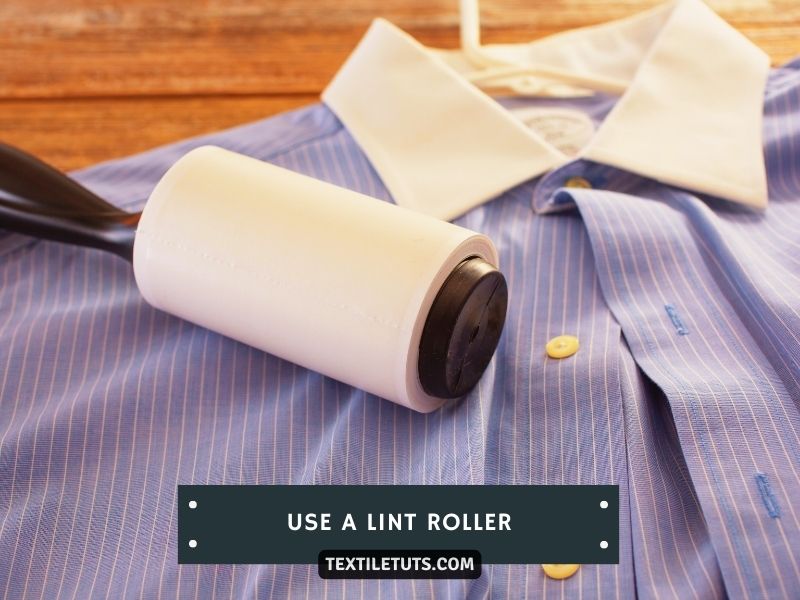
The most popular and successful approach to getting lint off of clothing is with this roller. To remove any undesirable fiber, simply roll the roller over your garments’ surface.
Wet Your Hands and Brush Them over the Area
This method works best on hairy fabrics like wool. Wet your hands and then brush them over the surface of the clothing to help lift the lint away from the fabric.
Use a Lint Brush
You can use tiny bristles or other fibers to help remove lint from your clothing. Simply sweep this brush over the surface of your garment to collect any stray lint.
Freeze Your Clothes
It’s best to use this technique on delicate textiles like silk. Place your clothes in a plastic bag and then freeze them for approximately an hour. The chilly temperatures will cause the lint to become brittle and fall off of your garments easily.
Use Vinegar or Lemon Juice
Both vinegar and lemon juice can help dissolve lint on clothes. Simply soak a cotton ball in either vinegar or lemon juice, and then rub it over the surface of your clothing. Let the clothing air dry, and these should be gone.
Use WD-40
This method works best on heavier fabrics like denim. Spray WD-40 directly onto the lint-covered area of your clothing and then rub it in with your fingers. These should come right off.
Rub an Ice Cube over the Area
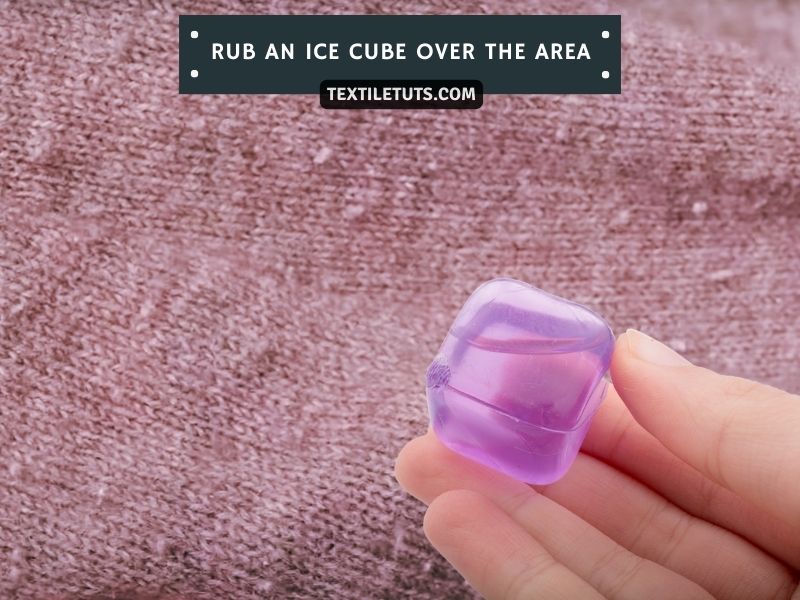
To remove lint from textiles, use a clean cloth and dampen it with water. A towel is soaked in water and draped over the clothes to help keep them moist while they dry.
Use a Lint Shaver
A lint shaver is a small tool that has a rotating blade that can help remove them from clothes. Simply hold this against the surface of your clothing and shave off any unwanted lint.
Use a Vacuum Cleaner with the Hose Attachment
This is one of the quickest and easiest ways to remove lint from clothes. All you need to do is hold the hose of your vacuum cleaner against the surface of your clothing and turn on the vacuum. The suction will lift away any unwanted fiber.
Final Say
In the end, removing lint from clothing is not that difficult. There are many different methods that you can use, so find the one that works best for you and your dress.
Be sure to test any new method on a small, inconspicuous area of your clothing first to make sure it will not damage the fabric. With a little bit of effort, you can keep your clothes looking lint-free all year long!

